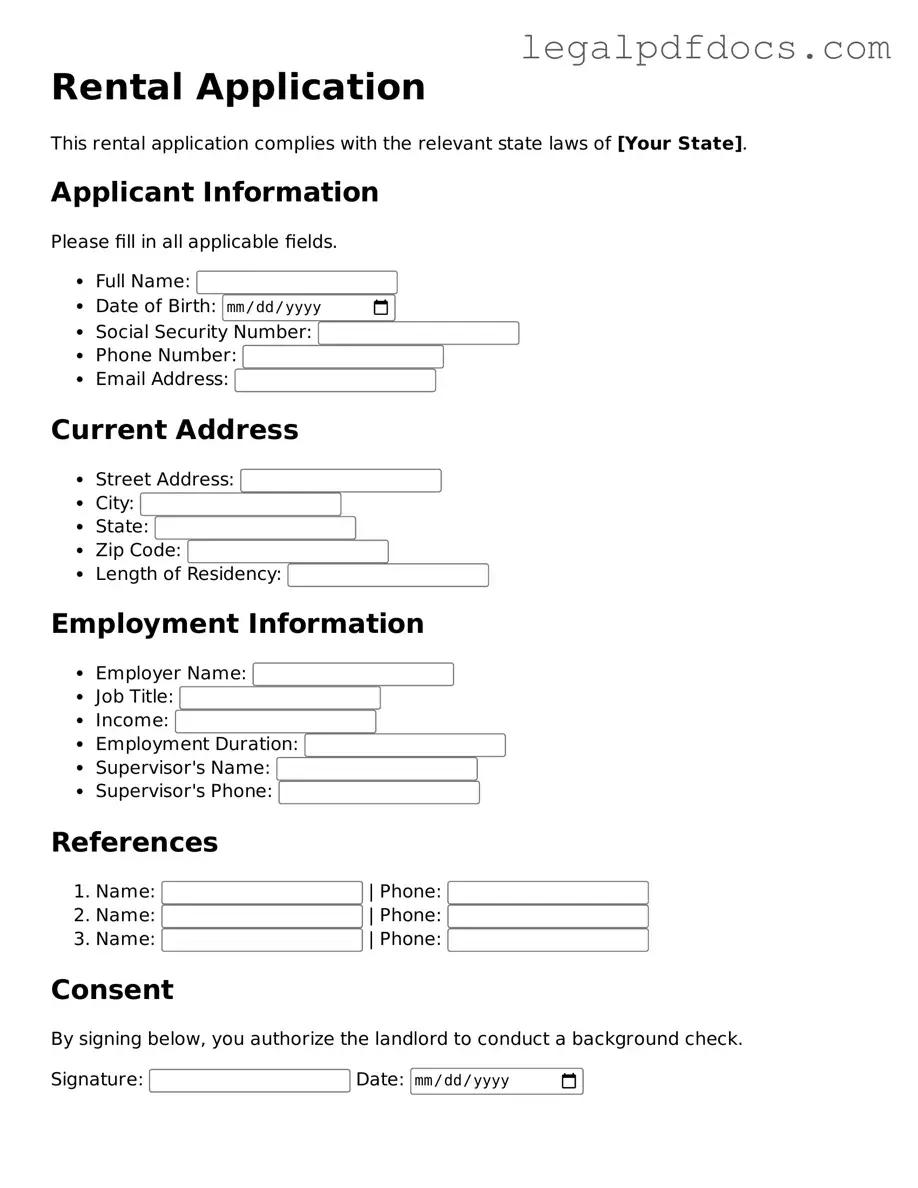When searching for a new place to call home, the rental application form is a crucial step in the process. This document serves as a gateway for potential tenants to demonstrate their suitability to landlords or property managers. Typically, it includes personal information such as your name, contact details, and social security number, which help verify your identity. Financial details, including your income and employment history, play a significant role as they give landlords insight into your ability to pay rent on time. Additionally, the form often requests references from previous landlords or personal contacts to vouch for your reliability as a tenant. Some applications may even ask about your rental history, pet ownership, and any criminal background, ensuring that landlords can make informed decisions. By understanding the various components of a rental application form, you can better prepare yourself and increase your chances of securing your desired rental property.
